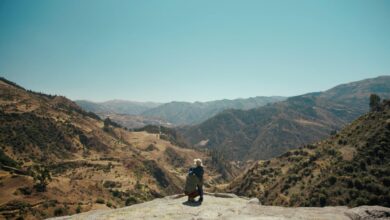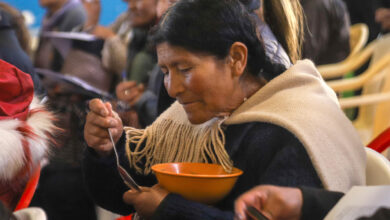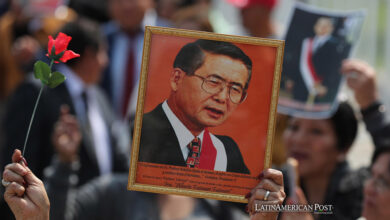Indigenous Reserve Creation in Peru Marks a Positive Milestone

The Peruvian government’s recent creation of the Sierra del Divisor Occidental Indigenous Reserve, covering 515,114 hectares, is a significant step forward in protecting isolated indigenous communities and their Amazonian homeland.
Establishing the Sierra del Divisor Occidental Indigenous Reserve in Peru’s Loreto and Ucayali departments marks a pivotal moment in the ongoing effort to protect vulnerable indigenous communities and preserve the rich biodiversity of the Amazon rainforest. This decision, encapsulated in a supreme decree approved by the Peruvian government, designates an area of 515,114 hectares as protected land, specifically aimed at safeguarding the rights and territories of the Mayoruna (Matsés or Matis), Remo or Isconahua, and Kapanawa peoples, who live in isolation.
This move should be celebrated as a triumph for indigenous rights and environmental conservation. It reflects a broader trend in Latin America, where governments and civil society are increasingly recognizing the vital role of indigenous communities in protecting ecosystems and preserving cultural heritage. The creation of this reserve not only protects these communities but also aligns with international commitments to safeguard human rights and environmental sustainability.
Historical Context and the Struggle for Indigenous Rights
The creation of the Sierra del Divisor Occidental Indigenous Reserve took time. It results from nearly two decades of advocacy and struggle by indigenous organizations and their allies. The initial request for such protection dates back to 2005, highlighting the prolonged and often arduous journey toward securing recognition and protection from the state.
Latin America has a complex history regarding indigenous rights. For centuries, indigenous peoples faced marginalization, displacement, and violence. However, the late 20th and early 21st centuries have seen significant progress, with many countries enacting laws and policies to recognize and protect indigenous rights. In Peru, the 2006 enactment of Law 28736 laid the groundwork for establishing indigenous reserves. This law recognizes the existence of indigenous peoples in voluntary isolation or initial contact and mandates the protection of their territories.
The recent decree aligns with this legal framework, demonstrating the Peruvian government’s commitment to upholding its obligations under national and international law. It also reflects a growing recognition that preserving indigenous cultures and protecting biodiversity are interconnected goals that benefit all humanity.
Environmental and Cultural Significance
The Sierra del Divisor Occidental Indigenous Reserve is located in one of the most biodiverse regions on the planet. The Amazon rainforest, often called the “lungs of the Earth,” is crucial in regulating the global climate and is home to many flora and fauna. Protecting large swaths of this rainforest is essential for the well-being of local ecosystems and combating climate change on a global scale.
Indigenous communities have long been the stewards of these lands. Their traditional knowledge and sustainable practices have preserved the Amazon’s biodiversity for generations. By formally recognizing and protecting their territories, the Peruvian government is ensuring these communities’ survival and preserving invaluable ecological knowledge and practices that are critical in the fight against environmental degradation.
Like many other indigenous groups, the Mayoruna, Remo, and Kapanawa peoples have developed complex land management systems that maintain ecological balance. These practices contrast sharply with the destructive tendencies of modern industrial activities such as logging, mining, and agriculture, which have caused significant damage to the Amazon.
A Step Forward for Indigenous Autonomy and Protection
The creation of the Sierra del Divisor Occidental Indigenous Reserve represents a significant advancement for indigenous autonomy in Peru. It acknowledges the sovereignty of these communities over their ancestral lands and provides a legal framework for their protection. This is particularly crucial for people living in isolation, as contact with the outside world often brings diseases, exploitation, and cultural disintegration.
The supreme decree outlines measures for monitoring, controlling, and supervising the reserve involving national and regional entities. This collaborative approach ensures that indigenous voices are central in managing the reserve, aligning with the principles of self-determination and autonomy.
Moreover, the establishment of this reserve sets a precedent for future initiatives. It sends a powerful message that indigenous rights and environmental conservation are priorities for the Peruvian government. This is vital in addressing historical injustices and building a more inclusive and sustainable future.
The Broader Latin American Perspective
The creation of indigenous reserves is not unique to Peru. Across Latin America, similar initiatives have been undertaken to protect indigenous territories and biodiversity. Countries like Brazil, Colombia, and Ecuador have established numerous indigenous reserves and protected areas, recognizing the critical role of indigenous peoples in environmental stewardship.
However, these initiatives often face significant challenges, including political resistance, economic pressures, and illegal activities such as logging and mining. The success of the Sierra del Divisor Occidental Indigenous Reserve will depend on the Peruvian government’s continued commitment and the indigenous communities’ active involvement in its management.
In Brazil, for instance, the protection of indigenous lands has been a contentious issue, particularly under the current administration. Despite legal protections, indigenous territories in the Amazon face constant threats from illegal deforestation and land invasions. This highlights the importance of robust enforcement mechanisms and political will in ensuring the effectiveness of such reserves.
International Implications and Responsibilities
The creation of the Sierra del Divisor Occidental Indigenous Reserve is not just a local achievement. It’s a global effort to protect indigenous rights and biodiversity, as outlined in various international agreements and declarations. This reserve, in its own way, contributes to global biodiversity targets and reinforces the importance of indigenous-led conservation efforts, which are highly effective in preserving biodiversity.
Furthermore, the creation of this reserve is not just a local achievement. It is a significant contribution to global biodiversity targets, such as those set by the Convention on Biological Diversity (CBD). Protecting large areas of the Amazon is not just crucial for achieving these targets and mitigating climate change. It is a shared responsibility that reinforces the importance of indigenous-led conservation efforts, which are highly effective in preserving biodiversity.
The international community has a crucial role to play in supporting such initiatives. This includes not just providing financial resources, technical assistance, and political support to ensure that indigenous reserves are effectively managed and protected. It also involves urgently holding governments accountable for their commitments under international law, as the ongoing challenges and threats to these reserves require immediate attention and action.
The creation of the Sierra del Divisor Occidental Indigenous Reserve is not just a landmark achievement for indigenous rights and environmental conservation in Peru. It is a testament to the unwavering resilience and indomitable determination of indigenous communities and their allies, who have fought tirelessly for nearly two decades to secure this protection.
This reserve safeguards the rights and territories of the Mayoruna, Remo, and Kapanawa peoples and preserves a vital part of the Amazon rainforest. It highlights the critical role of indigenous peoples in environmental stewardship and sets a positive example for other countries in the region.
Also read: Record High Cocoa Prices Drive Sustainable Farming in Peru’s Amazon
We must recognize that the work is incomplete as we celebrate this significant milestone. Continuous efforts are needed to ensure the effective management and protection of the reserve and to support indigenous communities in their role as guardians of the Amazon.
Creating the Sierra del Divisor Occidental Indigenous Reserve is a powerful reminder of what can be achieved when prioritizing indigenous rights and environmental conservation. It offers hope for a future where the rich cultural and ecological heritage of the Amazon is preserved for generations.





